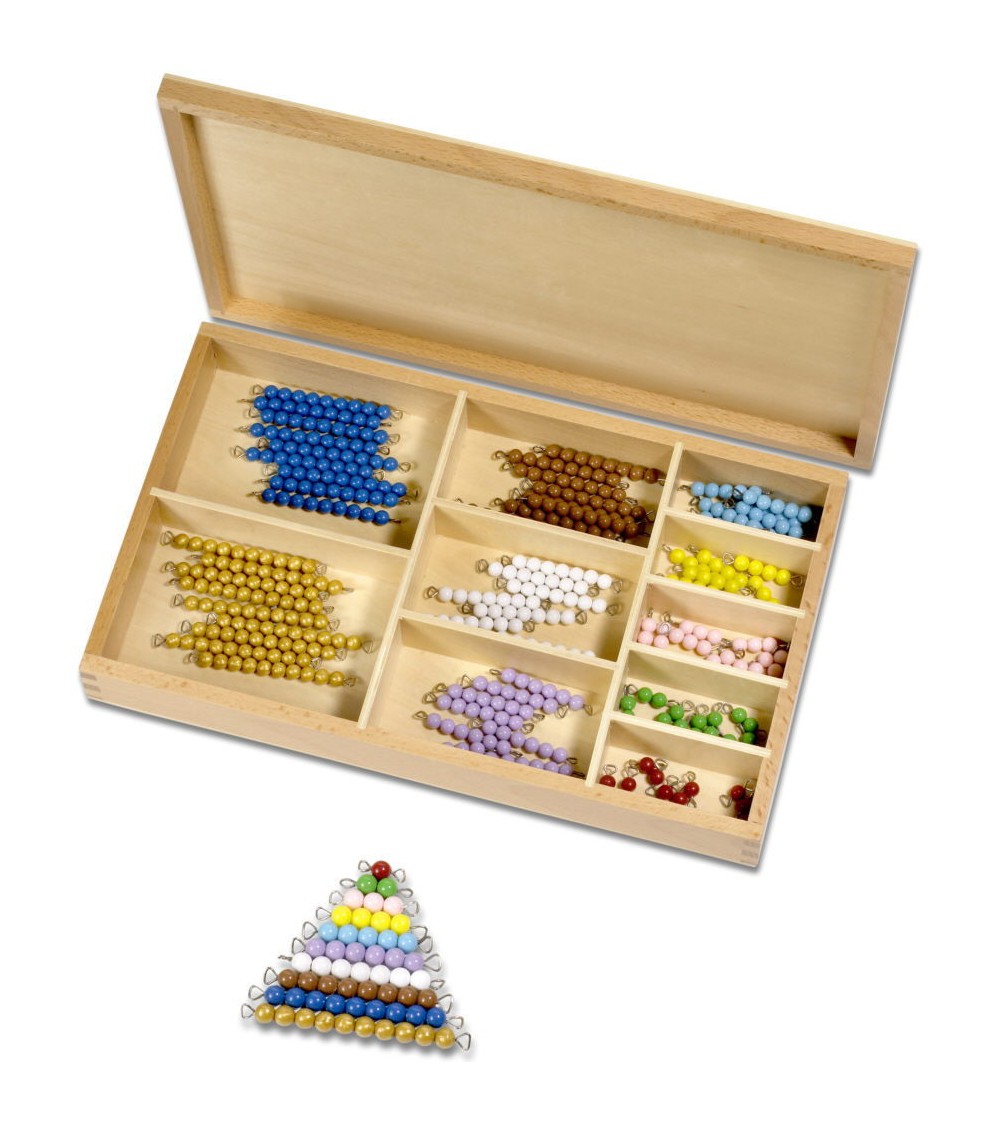Bead Material
Bead material with the colored Montessori bead sticks for the numbers 1 - 10
The colored pearl material is the arithmetic material badly. The different numbers of pearls and the different colors each represent the value of a digit. With this set you get enough pearl material to use it for division and multiplication.
Application, advantages, areas of application for this Montessori material:
-
- Process addition problems
-
- Practice subtraction problems
-
- Get to know the number range up to 10
-
- Pearl material for children from 4 years
-
- Internalize numerical values
Scope of the Montessori bead material:
1 wooden storage box: approx. 32 x 19 x 3.5 cm
per 10 bead sticks (values 1 to 10), plastic beads connected with wire, beads diameter: 7 mm each
Instructions for the Montessori bead material
The adult takes a bead stick from the wooden box and places it on the table, aligned left, from top (largest) to bottom (smallest).
Starting from the bottom, he takes out each pearl stick one after the other and counts the pearls individually (one pearl: one - that's one; two pearl sticks: one, two - that's two; three sticks: one, two, three - that are three ...).
After that, it is handed over to the child.
Variation:
The row is laid out again. Some chopsticks are removed (one after the other or at the same time), which the child puts back in the right place.
The adult takes two chopsticks from the wooden box, e.g. the 6 and 8 sticks and asks the child which stick goes in the middle (here: the 7 stick).
Exercise for number decomposition: a bead stick is selected and placed on the table.
Which chopsticks are the same size together as this one? (e.g. for a double crochet: 7 + 1, 6 + 2, 5 + 3, 4 + 4, 3 + 5, 2 + 6, 1 + 7). These tasks can be noted in writing. When making notes, the swap tasks should be one below the other, i.e. 5 + 3 and 3 + 5 or 6 + 2 and 2 + 6, to make it clear that the result is always the same here.
Simple bills can be submitted.

